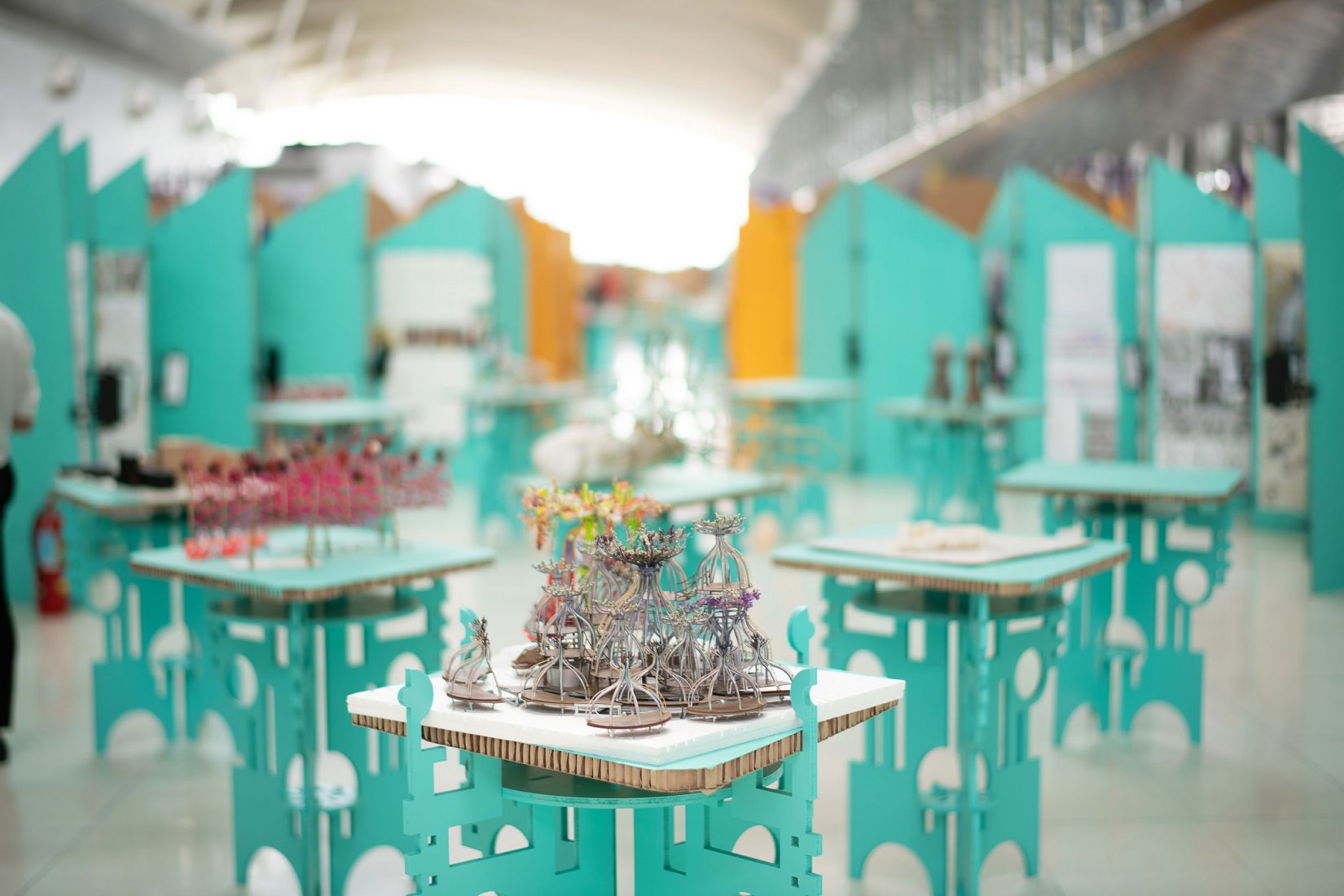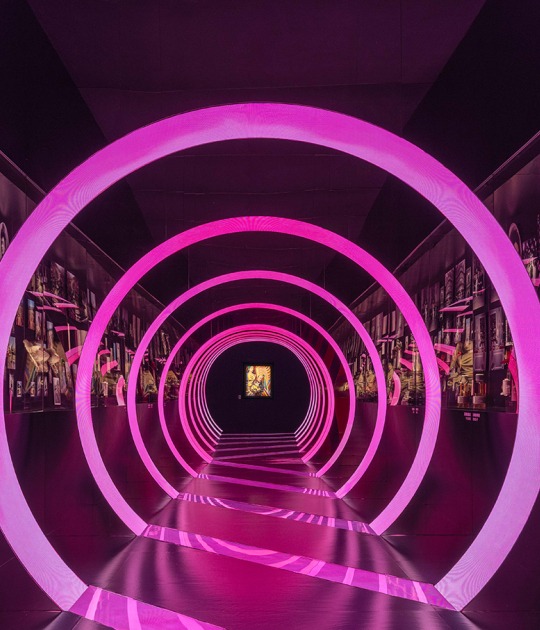The architects are very skilled when composing and designing the space, everything boils down to a journey, with a beginning and an end, highly hierarchical by the use of color and those proposed panels that, according to their distribution and placement, determine different spaces exhibition.
Project description by Pareid
Mo(nu)ment utilizes a repurposing strategy to create new formal arrangements and motifs in the design of a temporary end-of-year exhibition space for an architectural school that is able to host student work and events while simultaneously retaining a degree of autonomy as a monument (or a moment).
The design consists of two primary materials that are deployed in two different ways. The first is cardboard, which is used as planar surface elements for hosting work on display; and the second is MDF used as components for joining the cardboard in different ways.
The cardboard is reclaimed from the previous year’s exhibition where the top edges are cut into either arches or angles allowing visitors to distinguish between transitory spaces (such as hallways) and sedentary spaces (such as review spaces). This strategy is also a means for preserving the appearance of the cardboard as it removes any damaged edges and corners it might have incurred in its previous life.
The MDF joints are designed as a series of discrete pieces that configure and can be reconfigured into different families and types which are referred to as joints, components and totems.
The joints work as connections between two cardboard panels by locking them side by side. Alternating joints are fitted with an additional interlocking element that connects to the triangular pieces of cardboard on the backside of the panels that are propping the spaces up (much like a picture frame stand or easel).A change in each spatial zone is geometrically driven by which joint is used where, providing the option for various arrangements, configurations and spatial sequences.
Every other panel is connected at the top with components composed of discrete MDF parts that are assembled in an interlocking manner. The parts can be configured to attach to the rounded cardboard in review spaces, or partially disassembled and reconfigured through different notches in order to fit the angular panels in the transitory spaces.
Cut from 1.2x2.4m. boards, the CNC cut files of the components are strategically organized to maximize the material output while also creating a figure-like presence. Hence, the negatives of the component boards are erected double as totems and large joints between each space.
The tables echo a figural presence, and are able to take on multiple formations as either independent elements scattered about or grouped and joined together through interlocking elements.
Finally, the use of color as having the capacity to generate various spatial and organizational effects is also considered as a material in it’s own right, as it is through the color scheme in the various patterns on the totems that they are able to be read as AR markers, which in turn grant visitors access to the virtual portion of the exhibition via the customized app.
The combination of the aforementioned explores the transformative capacity for reuse to become 'new', as well as how the creation of a space and functional artifacts imbued with some degree of character can produce an affective quality, allowing the space to alternate between background and foreground as well as a medium between the physical and the virtual.



























































